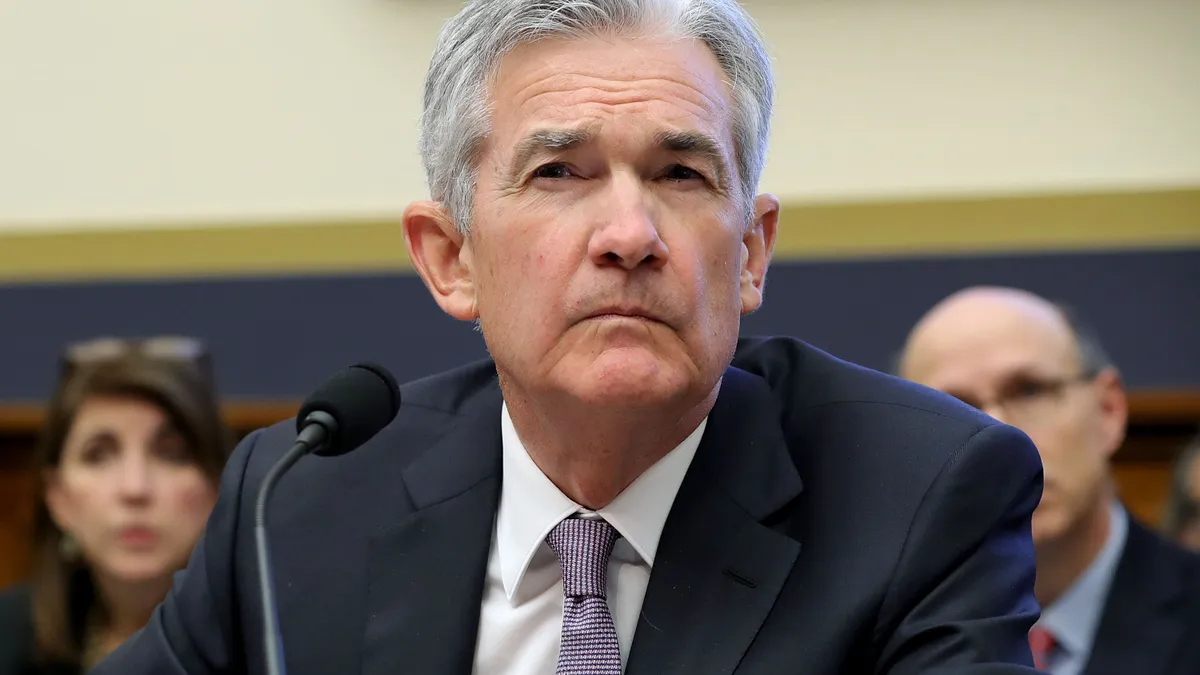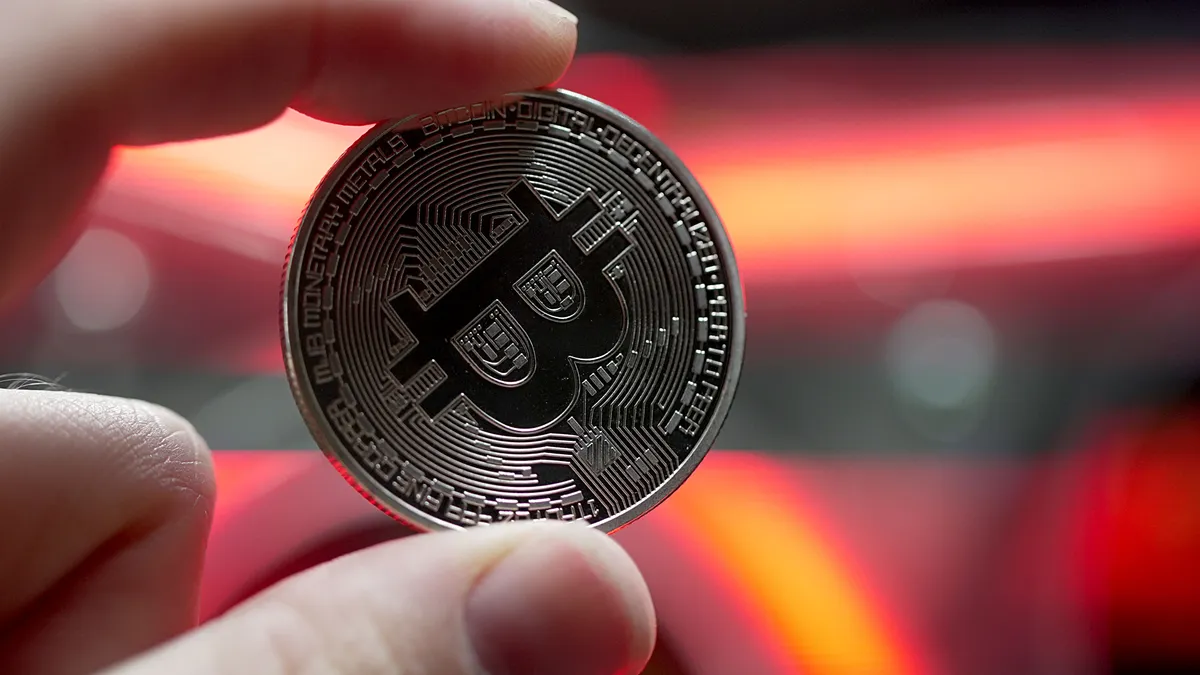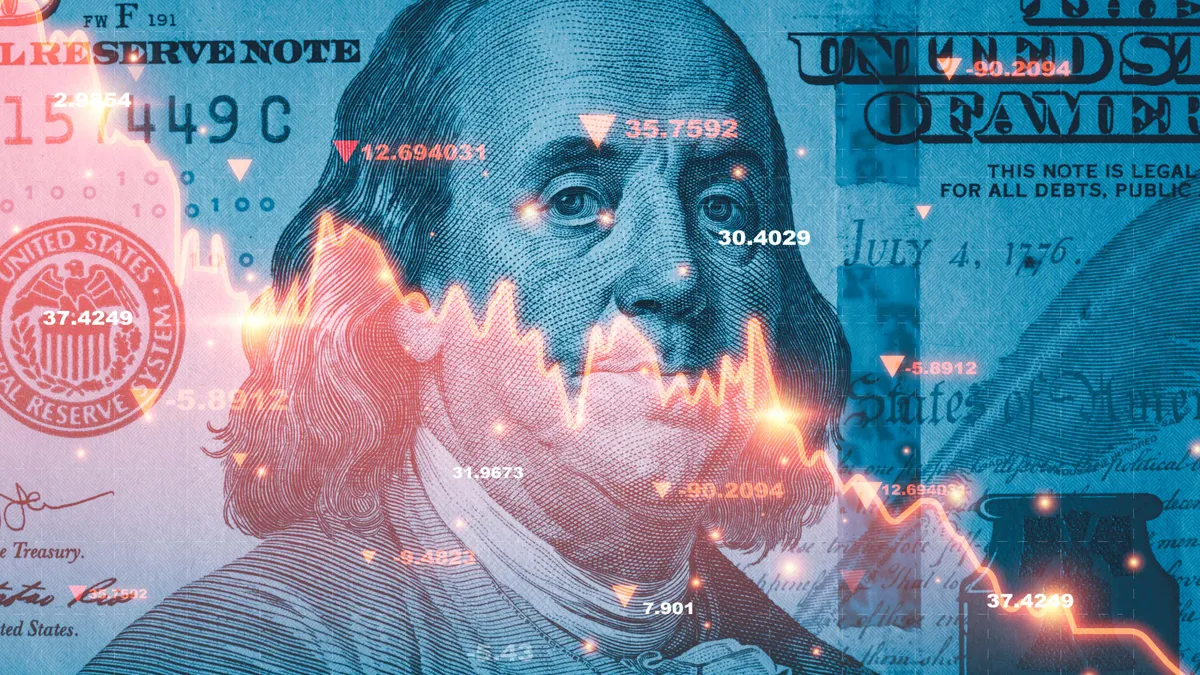Federal Reserve Chairman Jerome Powell shifted his tack slightly Thursday on the topic of creating a central bank digital currency, saying the Fed will issue a paper this summer designed to “stimulate broad conversation” about it.
In a brief video and statement posted Thursday on the Fed’s website, Powell seemed more open to pursuing the idea, where last year — and even as recently as March — he indicated he wasn’t in any hurry to develop a CBDC, considering the risks and trade-offs for the U.S. payments system.
“While various structures and technologies might be used, a CBDC could be designed for use by the general public,” he said in the prepared remarks Thursday, noting the Fed has been exploring the “potential benefits and risks of CBDCs” in recent years. “Our key focus is on whether and how a CBDC could improve on an already safe, effective, dynamic and efficient U.S. domestic payments system.”
As if to stem any concern about a shocking shift in the payments system, Powell said the Fed believes “it is important that any potential CBDC could serve as a complement to, and not a replacement of, cash and current private-sector digital forms of the dollar, such as deposits at commercial banks.”
China unveiled its own digital currency last month. The U.K., in the same time frame, formed a task force to study the issue. And Japan is investigating a sovereign digital currency.
Such explorations come as digital assets like Bitcoin have soared in value and popularity over the past year but have declined more recently, revealing their volatility. Some advocates of digital currencies and assets contend a digital currency would create a more inclusive financial system.
Organizations such as the Electronic Transactions Association (ETA) have weighed in to discussions with the Fed. The ETA this month issued seven principles it said should guide any consideration of such a U.S. digital currency. “We are certainly not opposed to it, but there is no ‘it’ yet,” ETA CEO Jodie Kelley said in an interview. “There are ongoing conversations, which is important.”
In its principles, the ETA, which represents some 500 corporations from Apple to American Express, showed a concern for making sure any CBDC can coexist with the current national and international payments systems and not disrupt them — though disruption is what some backers may want. The organization also said any CBDC should include participation by the private sector in its “design, piloting and distribution.”
“A CBDC should require a framework of standards and rules that safeguards the privacy and security of every transaction, protects consumers’ interests, and gives consumers the confidence necessary for in-person and online transactions,” the ETA said in its principles.
Powell mentioned the risks presented by a CBDC in his remarks Thursday but seemed less focused on those concerns than he was four years ago and more intent on making clear that the U.S. needs to remain a lead actor in technological developments on the world stage.
"We should have serious reservations about our ability to keep a generally circulating digital currency safe and secure over the long run,” he said in 2017, noting that a CBDC could be a “global target for cyber attacks, cyber counterfeiting and cyber theft” and “a potential vehicle for global criminal activities, including money laundering.” At that time, he also said he noted that a CBDC could “stifle” private-sector innovation and products.
He didn’t mention those threats in his remarks Thursday. Rather, he plunged ahead, saying this summer's paper will be “the beginning of what will be a thoughtful and deliberative process.”
“Irrespective of the conclusion we ultimately reach, we expect to play a leading role in developing international standards for CBDCs, engaging actively with central banks in other jurisdictions, as well as regulators and supervisors here in the United States throughout that process,” Powell said, adding that technological innovations, such as the distributed ledger technology that underpins cryptocurrencies, “is transforming the world of payments, finance and banking.”
Powell, however, noted that “to date, cryptocurrencies have not served as a convenient way to make payments, given, among other factors, their swings in value.”
Powell also noted stablecoins' potential to “enhance payments efficiency, speed up settlement flows and reduce end-user costs.”
Still, he said, they carry possible risks for users and the broader financial system in that they may not have the same legal protections as currency and bank deposits.























